What is a Rain Garden?
In Western Oregon, known for its long rainy season, rain gardens help manage the excess water and optimize aquatic habitat health. So, what exactly is a rain garden? It’s a landscaped area designed to capture and absorb rainwater runoff from nearby impervious surfaces, such as roofs and pavement. The rain garden is situated in a depression in the ground and is filled with soil and native plants that can tolerate both wet and dry conditions. You may have also heard of bioswales – the cousins of rain gardens. Bioswales move water along a curved or straight path, allowing some water to infiltrate along the way; whereas rain gardens are bowl-shaped gardens that capture water and allow it to infiltrate in situ. This post focuses mainly on rain gardens.
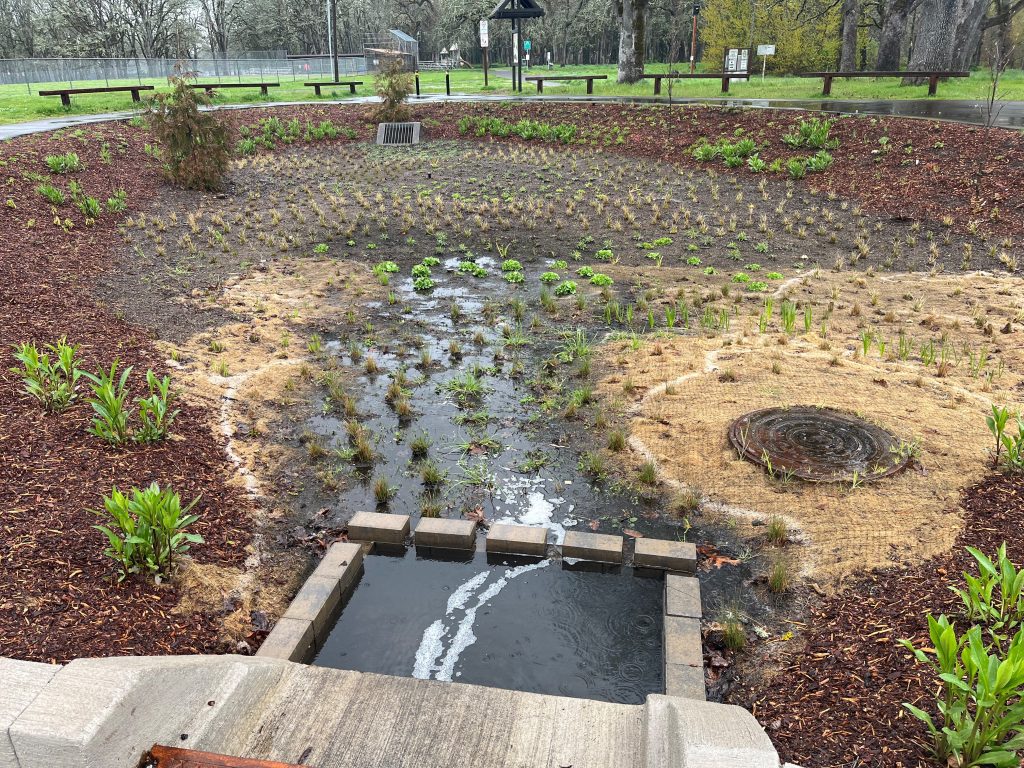
Rain gardens are becoming increasingly popular as a form of green infrastructure and can be found in both residential and commercial settings. In fact, they are often required for new or redevelopment projects to help manage stormwater runoff.
Benefits of a Rain Garden
- Reduces chances of flooding by absorbing rainwater from hard surfaces into the soil.
- Filters pollutants such as oil, grease, and toxic materials that can pollute water ways.
- Provides beneficial wildlife habitat with plant diversity and elevation interest to the landscape.
- Recharges groundwater aquifers by allowing water to percolate through the soil.
- Stormwater Credit: The City of Salem has a stormwater credit program available to some property owners to get a discount on their stormwater utility bill if practices such as rain gardens are implemented. Find more information on the City of Salem’s website here.
Visit a Rain Garden
Bush’s Pasture Park in Salem, Oregon has some great rain garden examples. Located at the south end of the park on Leffelle St. and Yew St, you will find rain gardens and bioswales that were established in 2011 and revegetated last season by team members from the City of Salem.
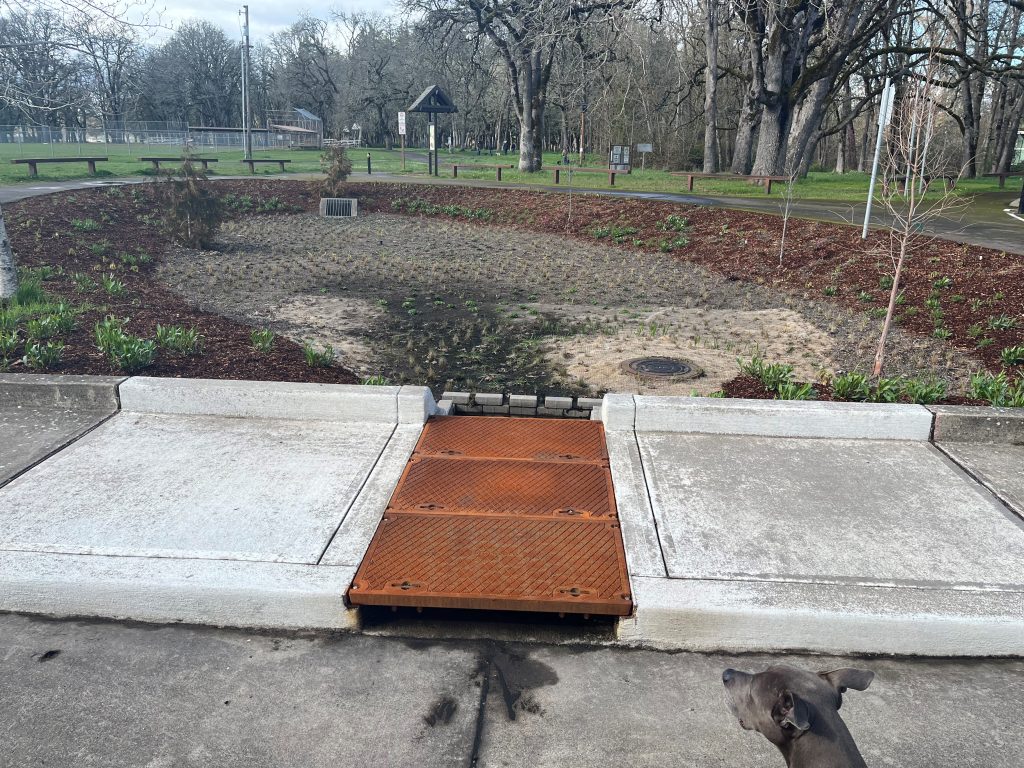
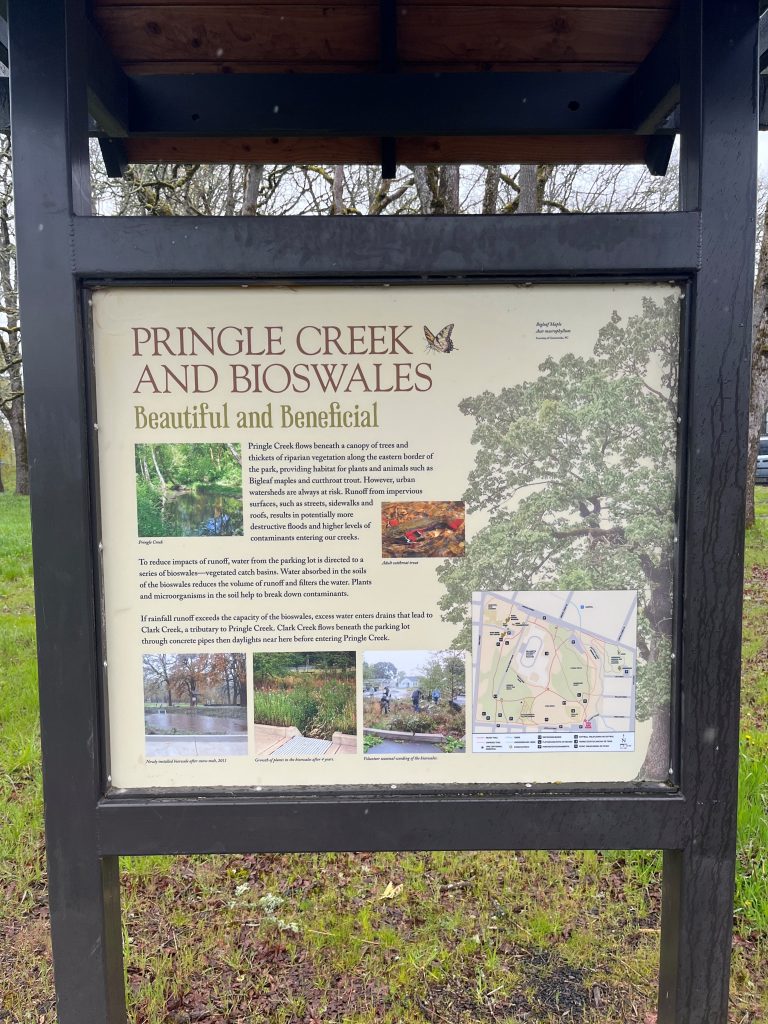
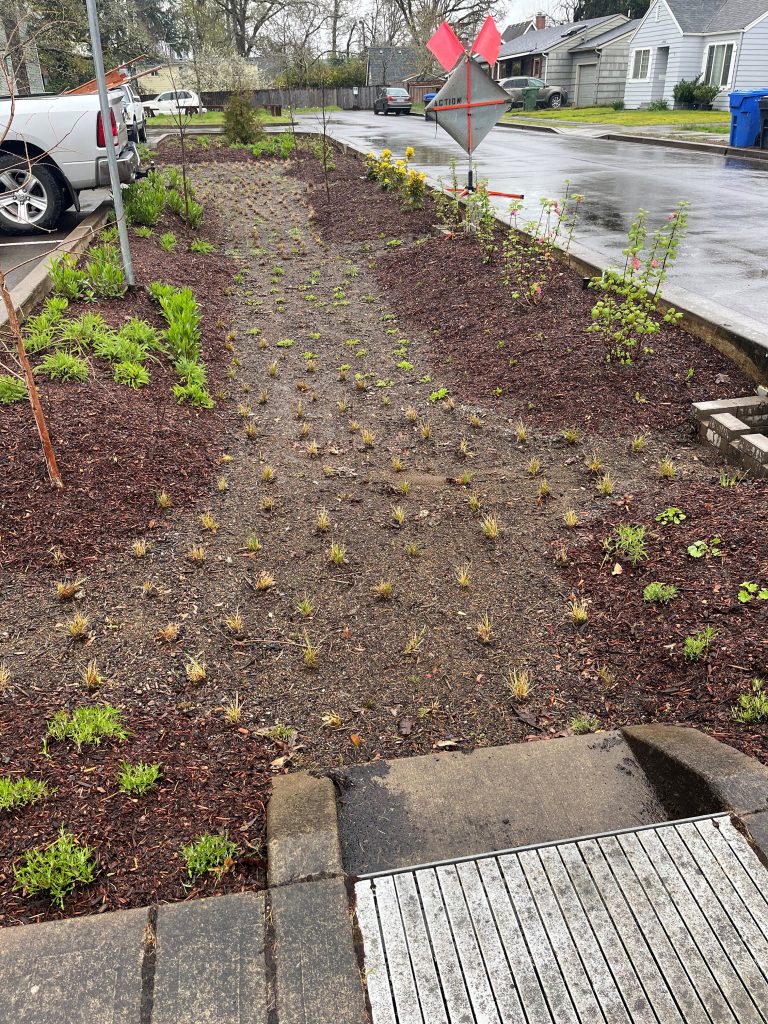
When it rains at Bush’s Pasture Park, water flows into the rain garden from the nearby parking lot. The soil and plants in the rain garden filter out pollutants and sediment from the water, protecting nearby Pringle Creek from contamination. The garden contains a mix of drought-tolerant native plant species, with Oregon Grape and Red Flowering Currant at the top edge and water-loving sedges and rushes in the lower swale.
Install a Rain Garden
Important factors to consider when installing a rain garden include: proper site location, soil texture, planting design, planning for overflow, long-term maintenance, and permitting. If you are in Salem, the Public Works Development Services can provide information on permitting requirements developmentservices@cityofsalem.net. Photos below feature Keizer Public Works team members digging out a swale at Keizer City Hall.
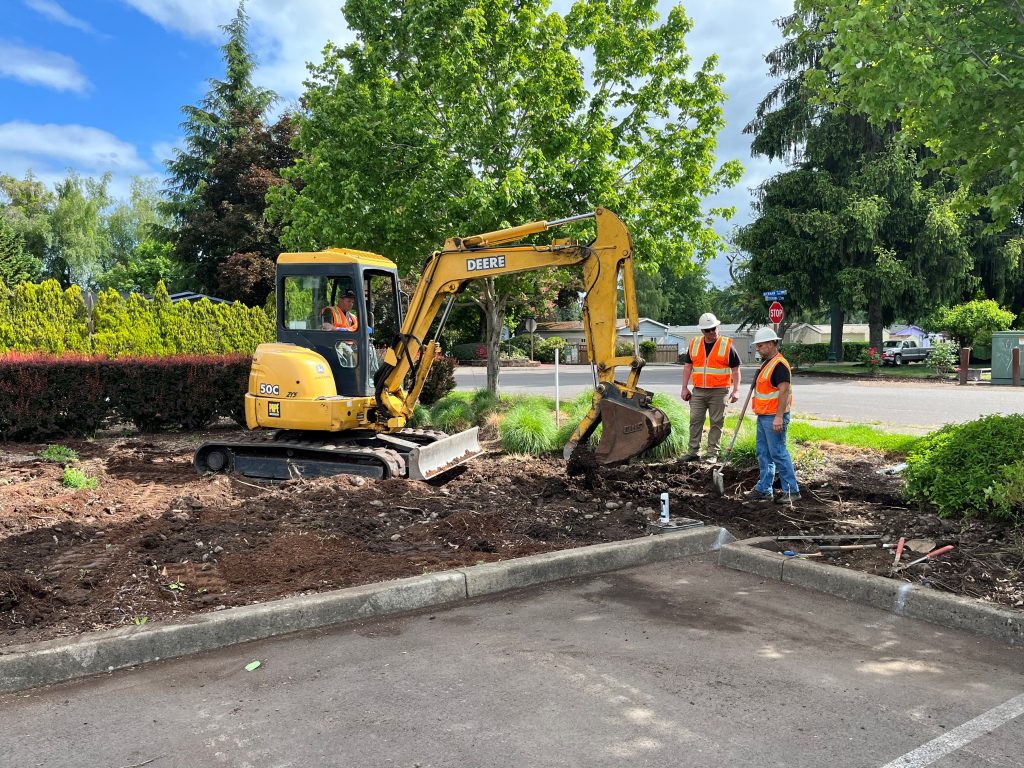
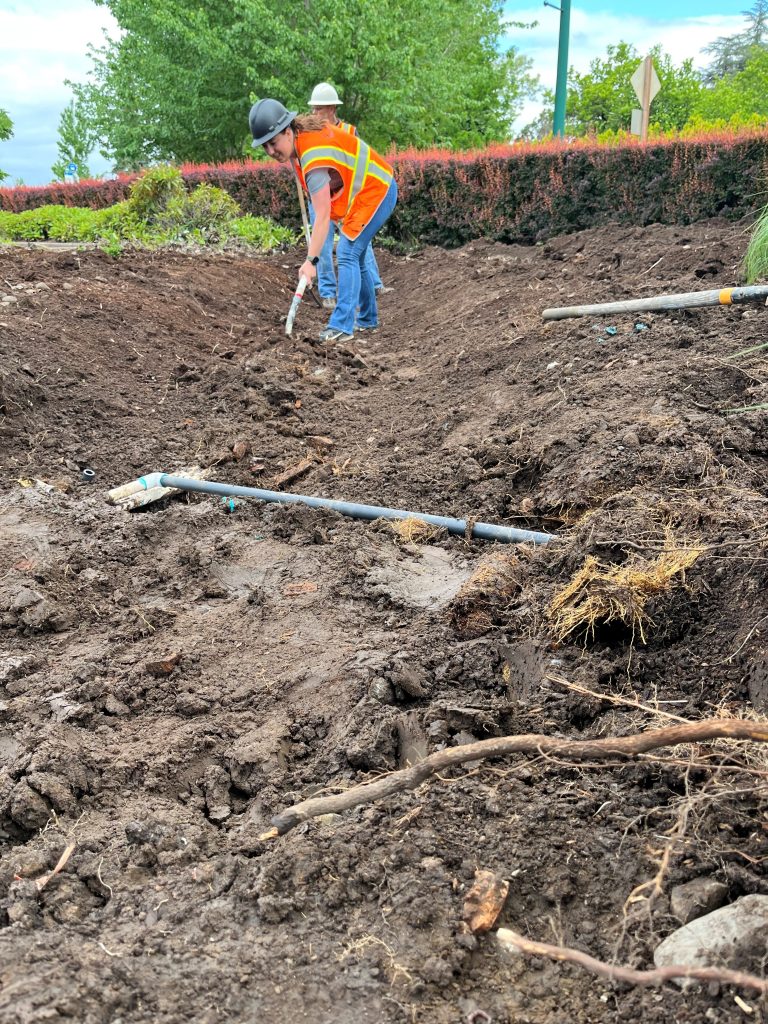
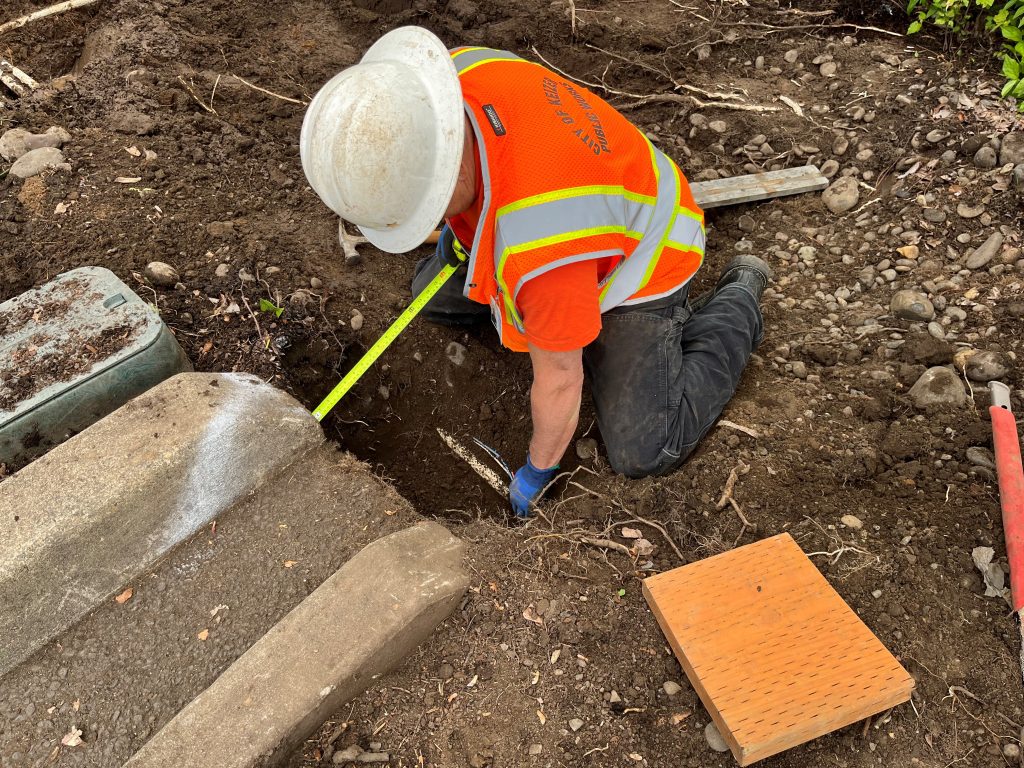
Want to learn more about installing a rain garden on your own property? Check out these resources:
- How to build a raingarden in 10 steps
- The Oregon Rain Garden Guide: Available for free online.
- City of Salem Stormwater Permits and Reports: This page provides links to documents that outline specific requirements and recommendations for managing stormwater runoff from development sites, including the use of green infrastructure practices like rain gardens.
About the Author

Feel free to reach out with any questions or if you would like resources related to urban conservation! I can also assist you in creating wildlife habitat in developed areas of the County through the Little Habitat Project.
